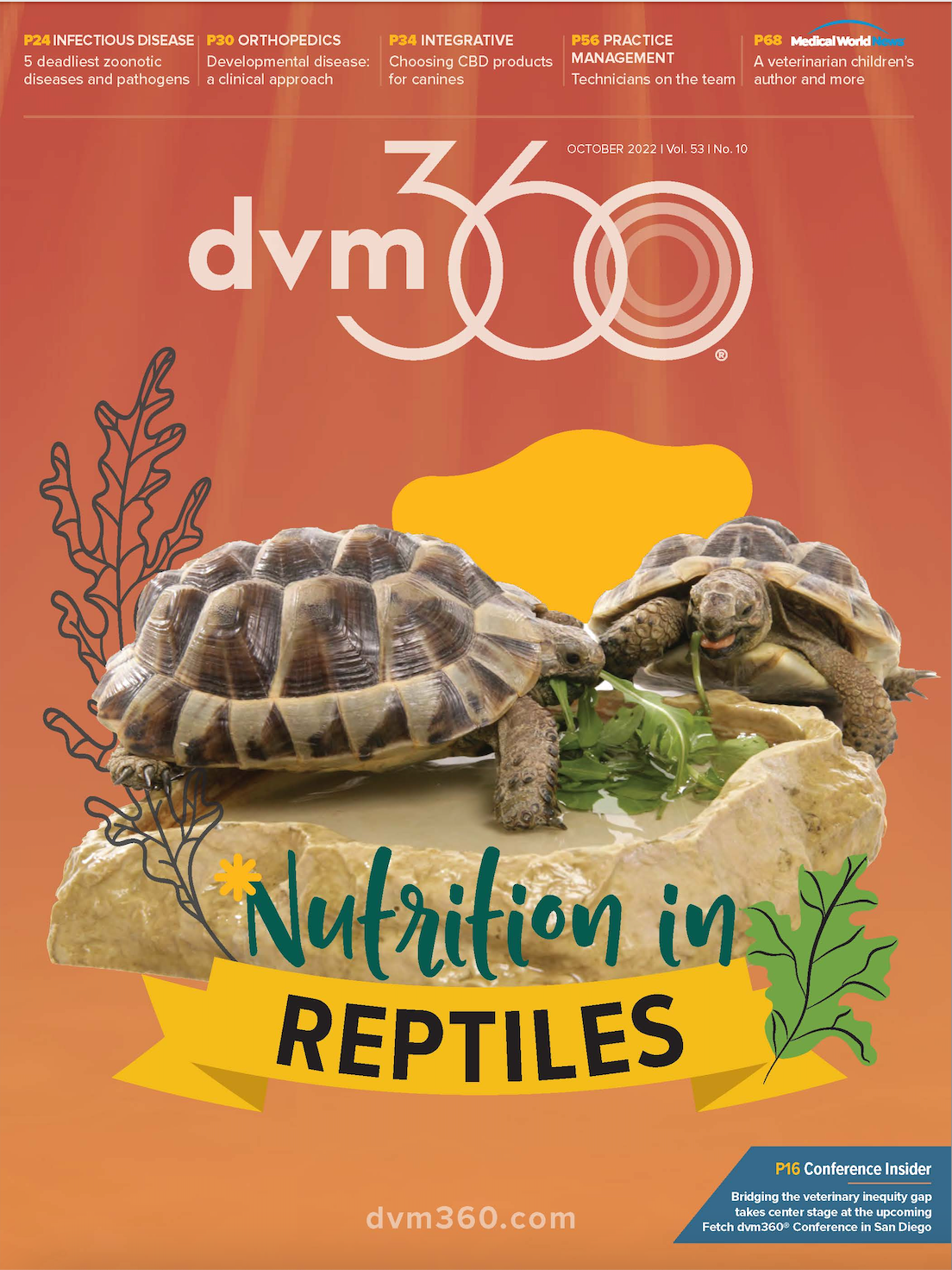Diversity is the key to success with reptile diets
Insectivores and herbivores alike need variety to get maximum nutrients
mattiaath-AdobeStock
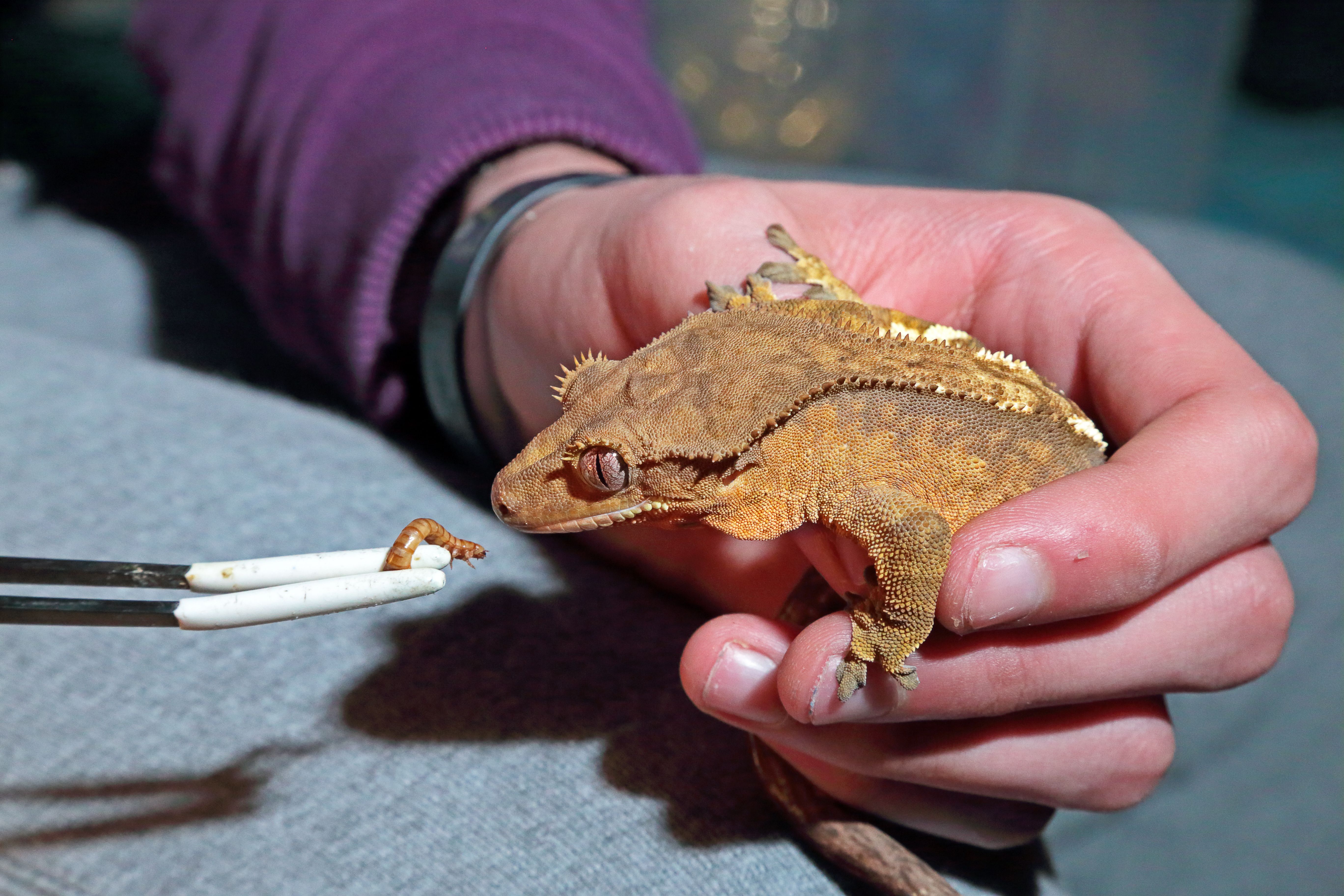
Reptile ownership continues to rise in popularity, making it more likely that you will have a client with a scaly pet. Although reptile medicine has evolved significantly over the past 3 decades, there remains much we do not know about best practices for managing these animals in captivity, including meeting their nutritional needs.
Much of the attention on reptile diets is singularly focused on calcium content, which results in many animals being undercompensated for other important nutrients such as protein, fat-soluble vitamins, and trace elements.
If we want to provide the best nutrition for captive reptiles, we need to look no further than our own diets. How many humans have diets limited to 1 or 2 food types? Unfortunately, this is common for captive reptiles, which are commonly offered only 1 type of insect. Although there are some humans with limited diets, many of us ensure our good health by diversifying our diets. By expanding the dietary offerings provided to captive reptiles, we can ensure they are exposed to a broader range of nutrients, as well as limit the likelihood of the pets developing a nutritional disease.
Historically, herbivorous species such as green iguanas (Iguana iguana) or sulcata tortoises (Centrochelys sulcata) may have had a limited diet of a single lettuce type (eg, iceberg) or fruits (eg, strawberries), leading to the development of secondary nutritional hyperparathyroidism (SNHP). Attempts to correct these diets were made by adding calcium dust to the food.1
Rain-AdobeStock
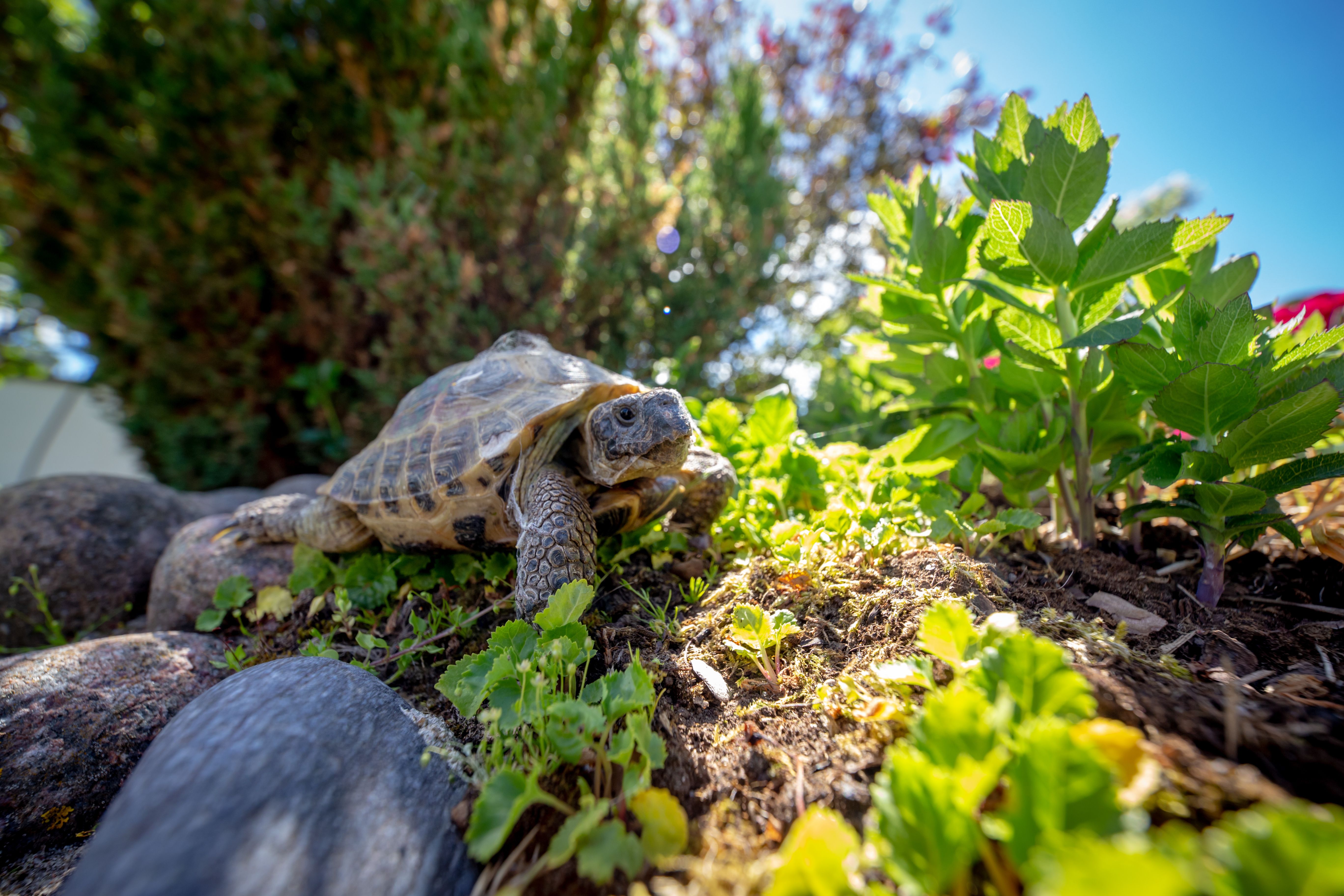
This may have altered the calcium concentration in the diet, but it did nothing to diversify it or to provide more protein (eg, for growth), fat-soluble vitamins (eg, A to limit the likelihood of squamous metaplasia and D to help with increased calcium absorption), or trace elements (eg, zinc for improved skin health and immune function)—let alone any of the other essential nutrients these reptiles need to thrive. Instead, by diversifying the diet and including a variety of greens and grass hays, we can reduce the likelihood of common diseases such as SNHP as well as other underlying nutritional deficiencies that are more insidious. These animals have evolved for over hundreds of millions of years and are more than capable of maximizing their absorption of nutrients. It’s important to provide these nutrients so that their bodies can do their jobs.
Ultimately, evidence-based research is key to increasing our understanding of the nutritional needs of reptiles. Unfortunately, research is limited. In our laboratory, we have spent a significant amount of time and energy expanding our knowledge on the subject, especially as it relates to insectivorous diets. It is well known that most prey insects have an inverse calcium-to-phosphorus ratio; exceptions include black soldier fly larvae (Hermetia illucens) and earthworms (Lumbricus terrestris).
Alan-AdobeStock
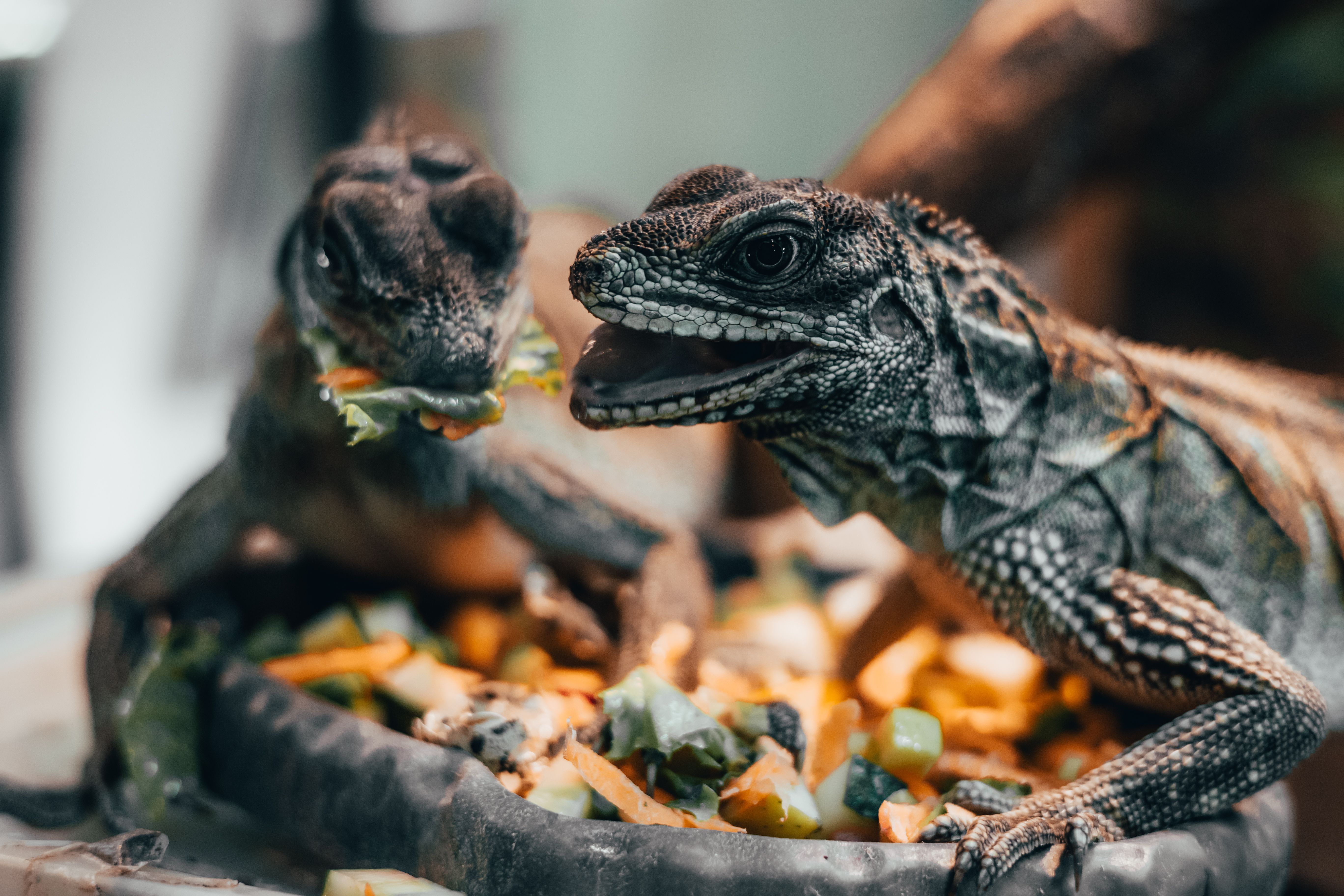
Because of this, reptiles fed poorly prepared insects (eg, not gut loaded or dusted) can develop SNHP. But overall, prey insects are a good source of nutrition. They are not perfect, but no natural food item should be considered complete. The idea that 1 or 2 food types (eg, house crickets [Acheta domesticus] and mealworms [Tenebrio molitor]) are sufficient to meet the needs of a reptile is short-sighted. Instead, we should consider that prey insects are an important source of hydration with moisture contents ranging from 60% to 75%; offer an appropriate amount of protein (20% to 28%) for growth and maintenance of body condition; and contain 5% to 20% fat, allowing diets to vary according to the animal’s caloric needs (ie, juveniles need more for growth, and adults need less for maintenance).
It is possible to characterize the type of prey insects a reptile needs to meet its nutritional needs. For example, an adult male bearded dragon (Pogona vitticeps) would benefit more from a low-fat diet (eg, house crickets, black soldier fly larvae, hornworm [Manduca quinquemaculata]), whereas a growing juvenile beard dragon might benefit from a higher fat diet (eg, mealworms) because the 9 kcal/g gained from fat provide more energy for growth than the 4 kcal/g gained from protein.
The amount of food offered is also an important consideration. Ad lib eating can lead to obesity. Evidence suggests that providing diets based on metabolic rates, which can often be estimated to be 2% to 4% of body weight every other day or 1% to 2% daily, is an excellent starting point. Of course, activity level and body condition should also be considered when deciding how much to feed a captive reptile. Allowing the animal to exercise in a protected environment (eg, not outside where it can escape, but in an area where other pets can’t attack them) and addressing biosecurity concerns (eg, Salmonella shedding) are important to minimize risks to reptiles and humans in
the household.
Laurel Jeninga-AdobeStock
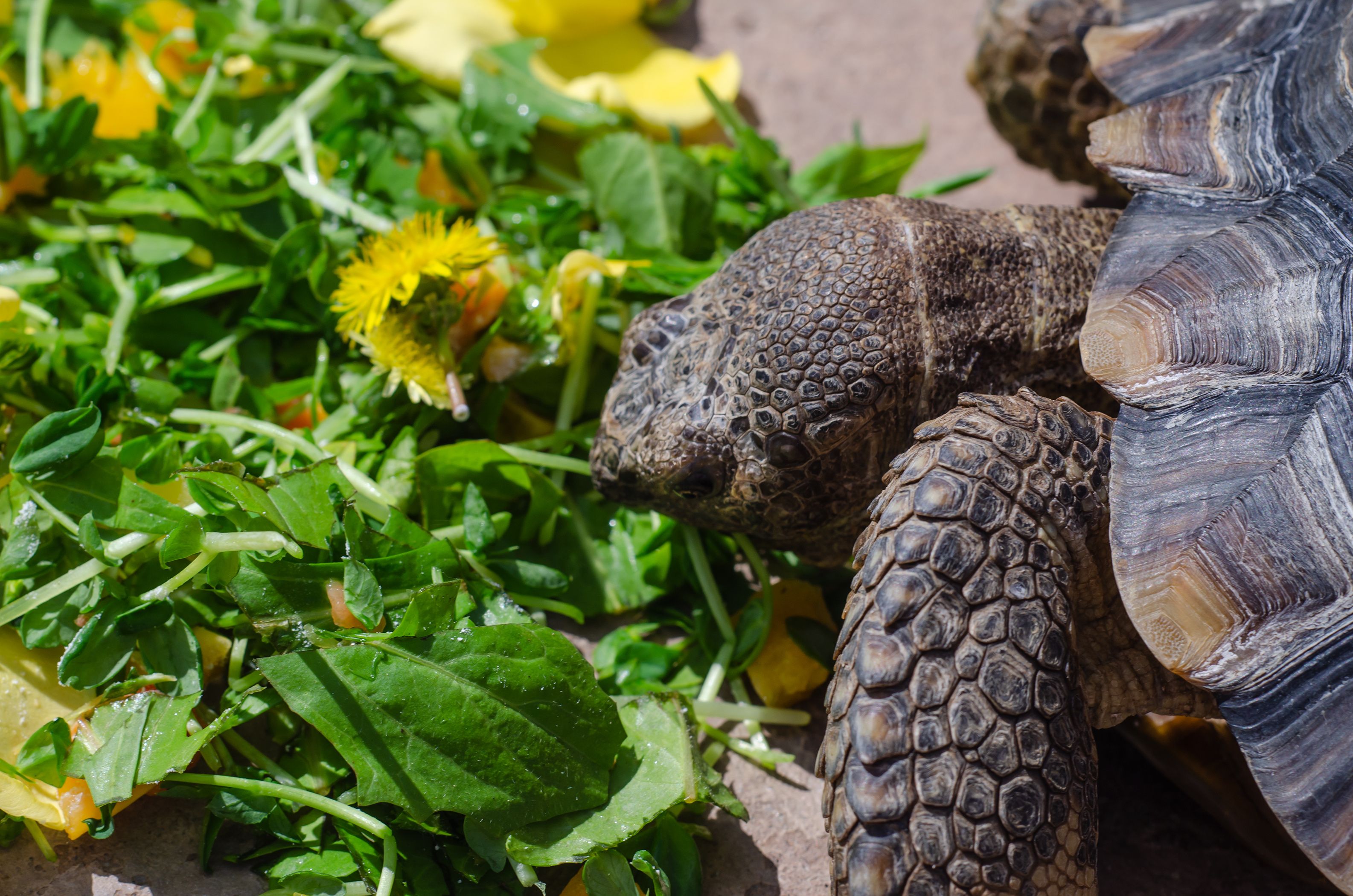
Commercial diets are another potential source of nutrition for captive reptiles. However, although there are commercial diets in the form of kibble for dogs and cats that appear to meet their needs, such diets don’t exist for reptiles. Certainly, there are commercial diets available for reptiles that are intended to be complete, with many manufacturers claiming their products meet the nutritional needs of reptiles, but these diets have not been proven using evidence-based research as has been done with dog and cat diets. I expect the day will come when these diets are capable of providing complete nutrition, but they will require rigorous research. At this point, based on the limited research, limiting commercial reptile food to no more than 20% to 40% of the reptile diet is recommended. These diets can provide a variety of vitamins, minerals, and trace elements that are naturally lacking in live insect prey but should not be fed exclusively.
In addition, there is value in the reptile needing to locate and acquire its food (eg, active hunting an insect), rather than having it provided in a bowl. This form of stimulation is an important type of enrichment for captive reptiles.
Ultimately, the path to success with reptile nutrition is no different from our own. Develop an understanding of the nutritional value of the foods being offered, diversify the diet to increase the types of nutrients provided, and offer an appropriate amount of food to meet the physiological needs of the animal (eg, more if the reptile is growing or reproducing; less if it is geriatric).
Veterinarians can play an important role in educating clients about their reptiles and what they should monitor (eg, routinely weigh their pet to monitor body weight). A veterinarian’s relationship with clients is key to the long-term success of these long-lived animals and their human caretakers.
Mark A. Mitchell, DVM, PhD, MS, DECZM (Herpetology), received a DVM and an MS in wildlife epidemiology from the University of Illinois in 1992 and 1997, respectively. He completed a PhD in wildlife epidemiology at Louisiana State University in 2001. He has spent his entire career working as a professor of zoological medicine at these 2 institutions and has authored more than 800 book chapters, peer-reviewed articles, scientific abstracts, proceedings, and lay articles. He is a past president (2000-2001) of the Association of Reptilian and Amphibian Veterinarians, a former coeditor in chief of the Journal of Exotic Pet Medicine (2005-2019), a former editor-in-chief of the Journal of Herpetological Medicine and Surgery (2009-2021) and currently servs as editor in chief of the Journal of Avian Medicine and Surgery (2021-present). Mitchell is also the first recipient of the ARAV Excellence Award (2016).
Reference
Mans C, Braun J. Update on common nutritional disorders of captive reptiles. Vet Clin North Am Exot Anim Pract. 2014;17(3):369-395. doi:10.1016/j.cvex.2014.05.002
